Check out this classic version of sesame noodles done in 10 minutes. Learn how to make the perfectly silky and tasty sauce, along with tips on noodle choices and ingredient substitutions.
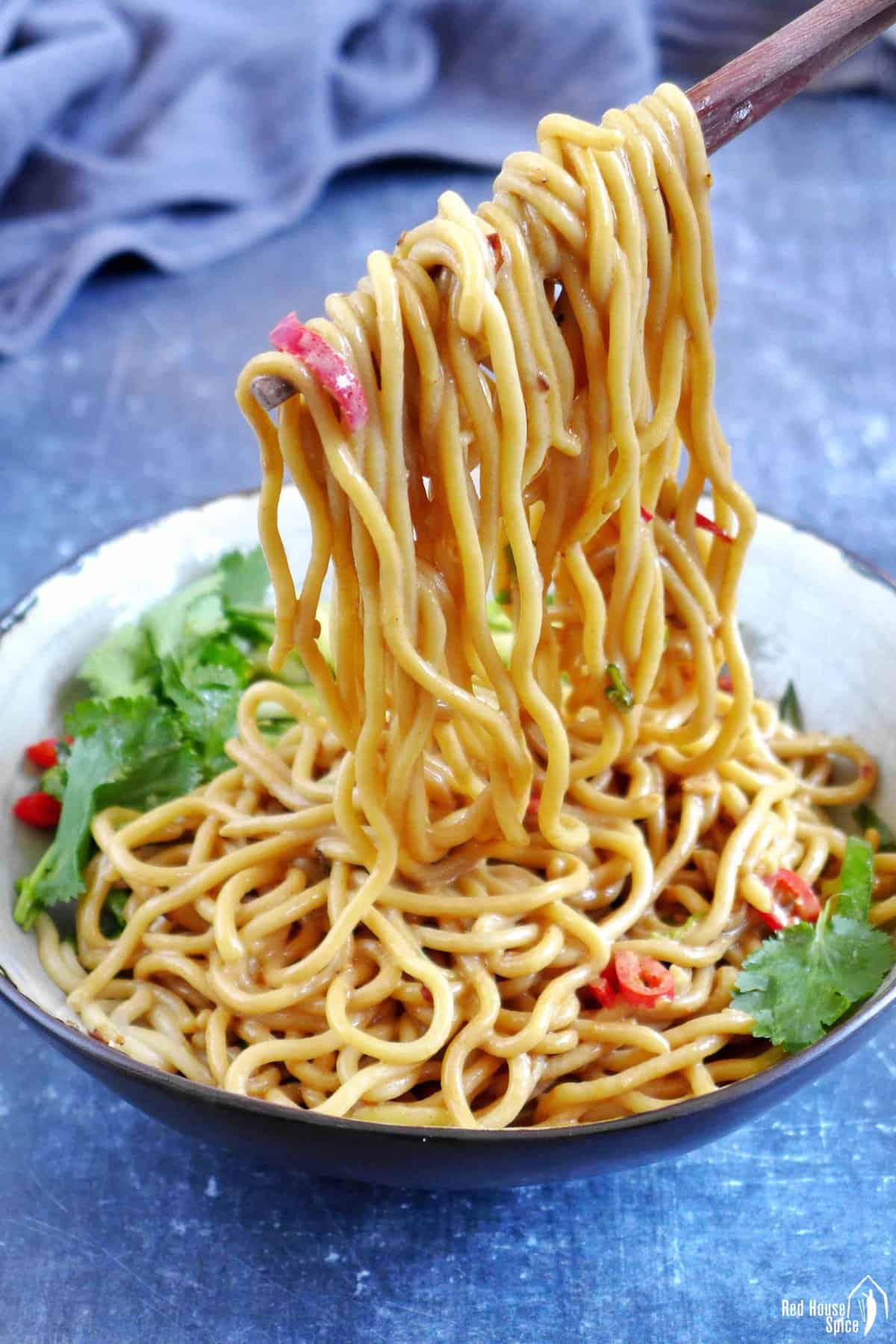
Jump to:
What are sesame noodles
Sesame noodles, known as Ma Jiang Mian/麻酱面 in Chinese, are popular in many regions of China. They are often served at street stalls or neighborhood restaurants as breakfast or lunch. Over the decades, they have made their way to overseas restaurants and takeout, becoming a popular dish with a few local twists in taste.
Although regional sesame noodles differ in taste, they all share a few features: round wheat noodles generously coated with a silky, rich sesame paste-based sauce, and accompanied by julienned crispy vegetables and/or other savory toppings.
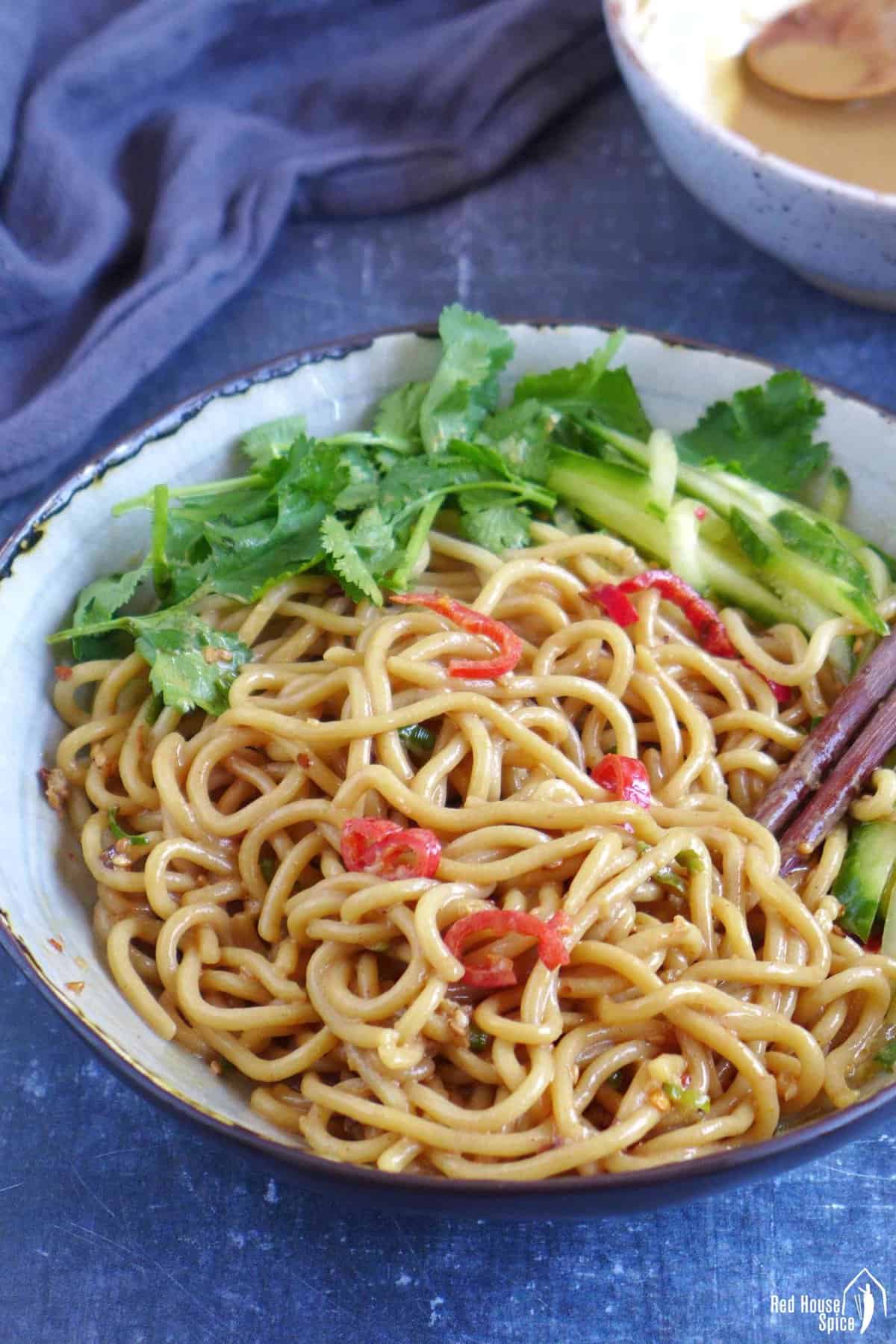
The recipe I share is the classic, vegetarian/vegan version that’s served cold. It makes an ideal family meal on warm days as it is super quick and simple to prepare (easier than dishes like Dan Dan Noodles, Chongqing Noodles, Sichuan Cold Noodles, etc.).
Armed with this basic recipe, you can improvise and add protein toppings as you wish, such as eggs, shredded chicken, fried minced pork/beef, smoked tofu, etc.
Ingredients
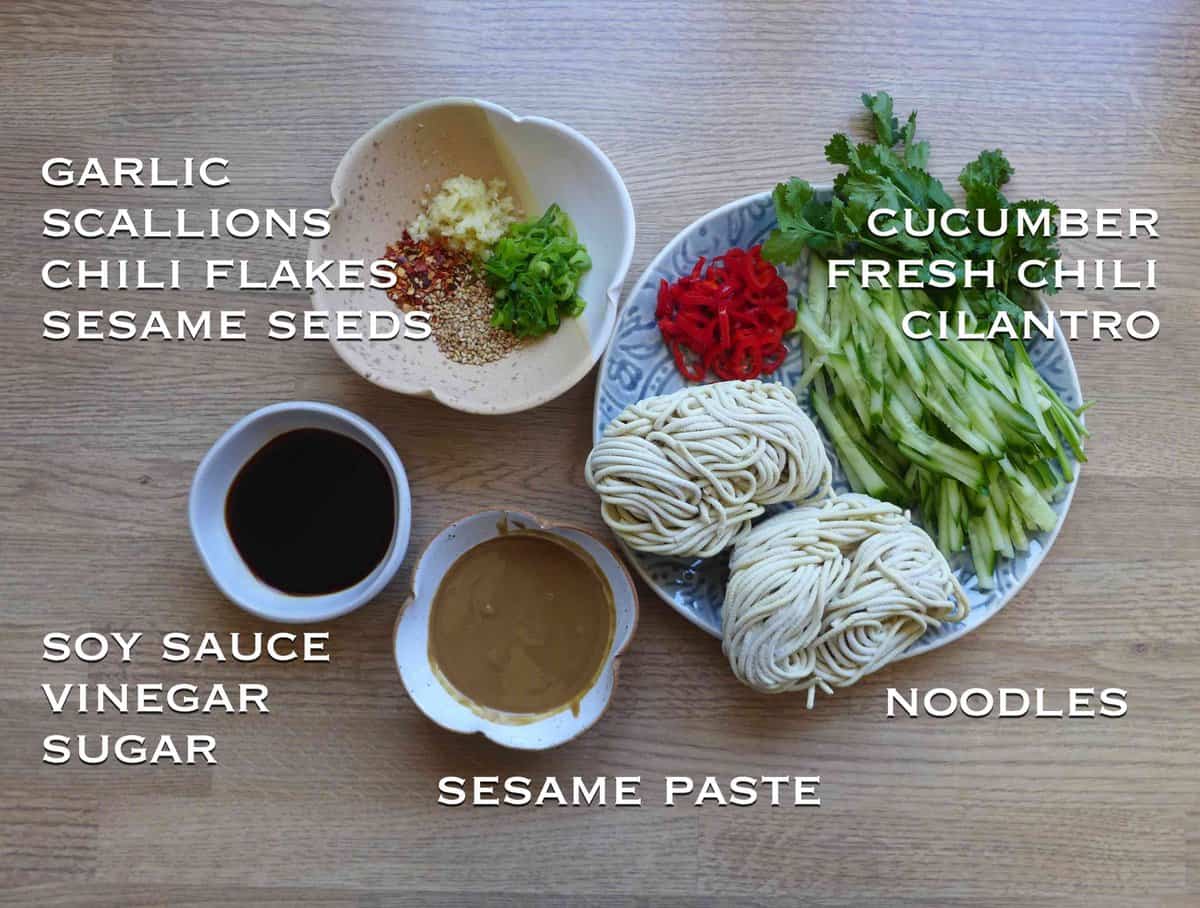
- Noodles, fresh or dried (find more info in the next section)
- Vegetables. I used julienned cucumber and fresh chili for shooting this recipe. Other crunchy veggies work well too, such as carrots, bean sprouts, bell peppers, celery, etc. Add some fresh cilantro to garnish if you wish.
- The aromatic & spice dressing. It includes garlic, scallions (green onions), chili flakes, toasted sesame seeds, and hot oil that helps to bring out the flavors of the above ingredients.
- The sesame sauce. It’s a mixture of Chinese sesame paste (see substitutes in later sections), light soy sauce, black rice vinegar, and a little water.
Which type of noodles
In short, any type of noodles would work for this sesame noodle recipe. Here are some options:
- Dried noodles, of all shapes and sizes, are a handy option when you’re short on time.
- Homemade ramen noodles (alkaline noodles) are my go-to type (what I used for shooting this recipe). They’re narrow enough to catch more sauce and their silky, spring texture works well when served cold.
- Hand-pulled noodles are great too. I particularly like the Biang Biang Noodle type which features super wide and chewy noodles that taste wonderful with any spicy, bold seasonings.
- Rice noodles. Although this dish usually calls for wheat noodles, narrow, round rice noodles work well too.
- Soba noodles or udon noodles. They are great for cold dishes like this one.
- Spaghetti. I know it has nothing to do with Chinese cuisine, but I’ve used it as an alternative and my family approved!
Sesame paste & its substitutes
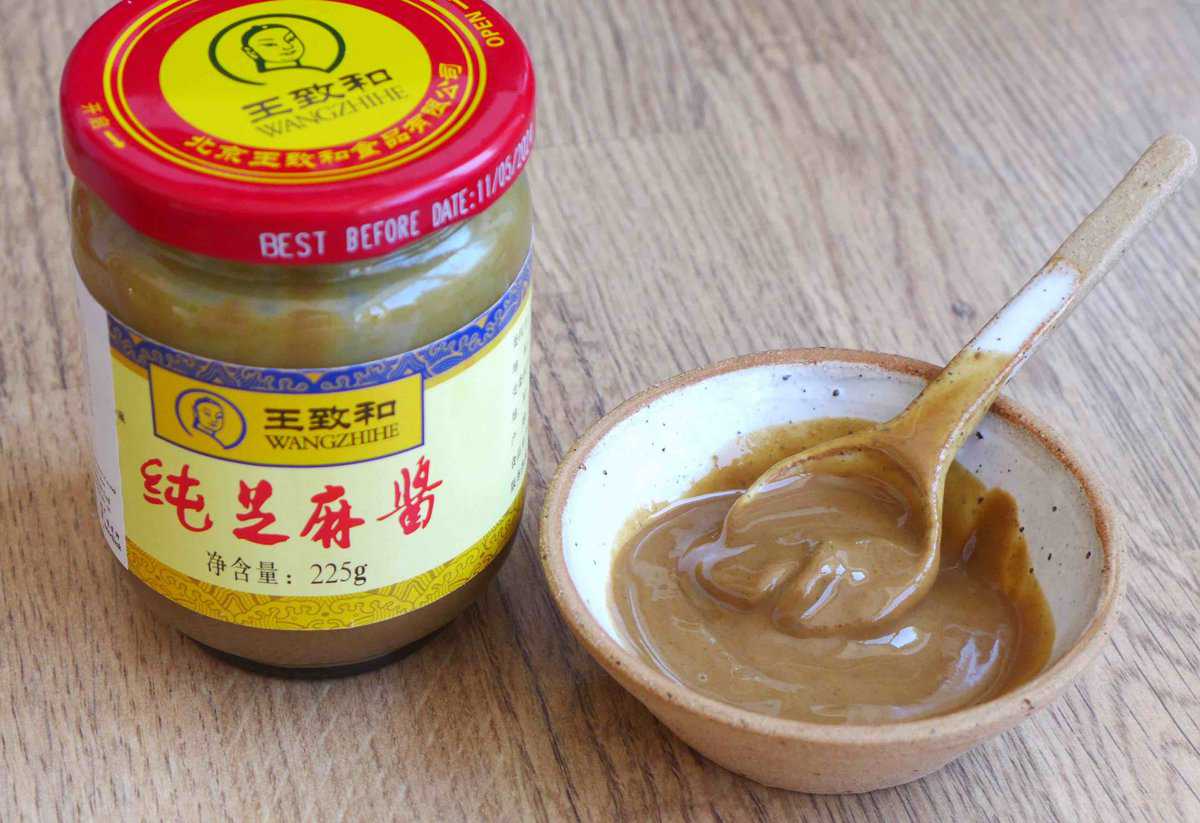
Chinese sesame paste (Zhi Ma Jiang/芝麻酱) is the star ingredient of this dish. It’s made from toasted whole (unhulled) sesame seeds and has a thick consistency, a brown color, and a distinctive nutty aroma with a bitter undertone. You can find it in classic dishes like Dan Dan Noodles, the dipping sauce for Hot Pot, etc.
Unable to find it? Here are two substitution ideas:
Peanut butter
Although peanut better tastes different from sesame paste, it makes a delicious alternative nevertheless. I suggest you use the smooth version, preferably one made solely from peanuts without additional ingredients.
Tahini + sesame oil
I’ve often been asked if tahini, a popular condiment in Middle Eastern cuisine, can be used as a substitute. Despite being made from sesame seeds like Chinese sesame paste, it has a noticeably different taste.
I’ve tried various types of tahini made with different types of sesame seeds (unhulled, hulled, lightly-toasted, well-toasted), but they all seem to lack the strong nutty and smoky flavor that distinguishes Chinese sesame paste. If you are using tahini, try adding a little good quality toasted sesame oil to enhance the flavor.
Cooking workflow
Step 1: Prepare the sauce
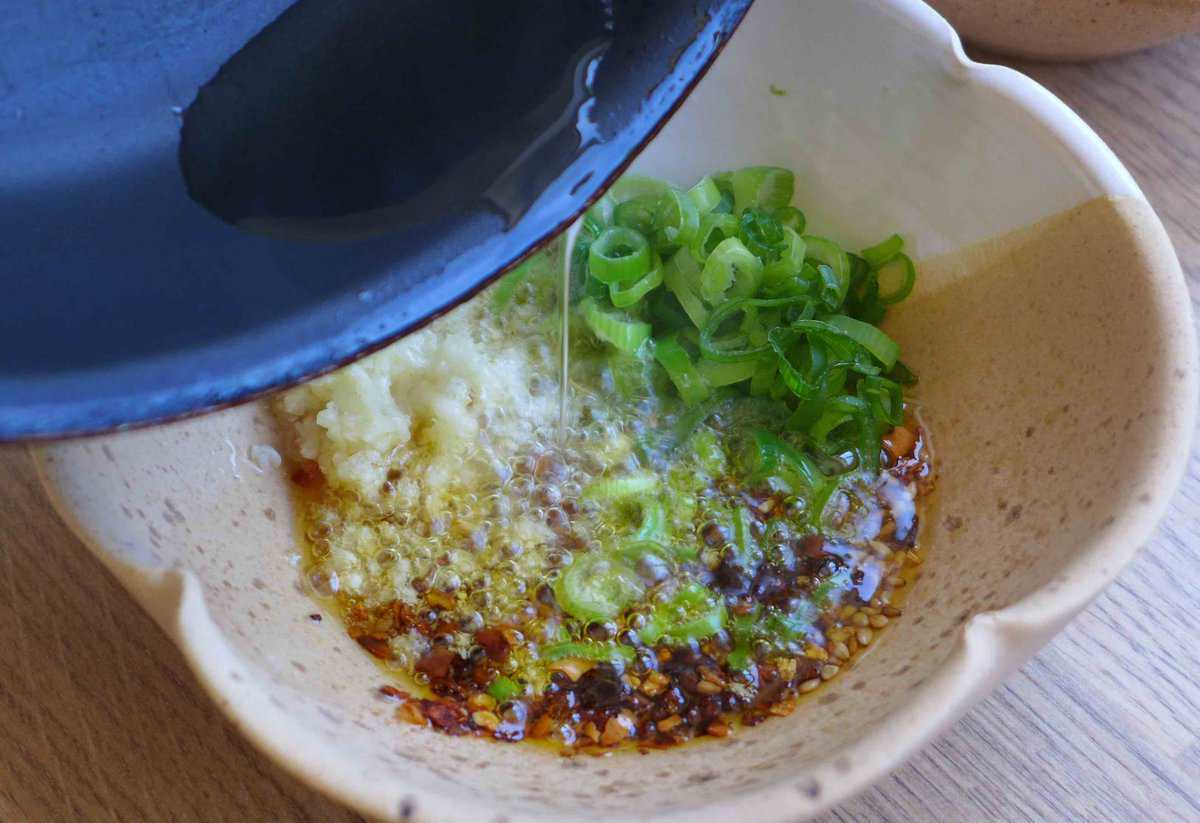
Firstly, make the aromatic and spice dressing. Add minced garlic, chopped scallions, sesame seeds, and chili flakes to a small bowl. Heat oil until it starts to smoke. Carefully pour it over the mixture. Then quickly mix with a spoon so that the ingredients are evenly sizzled.
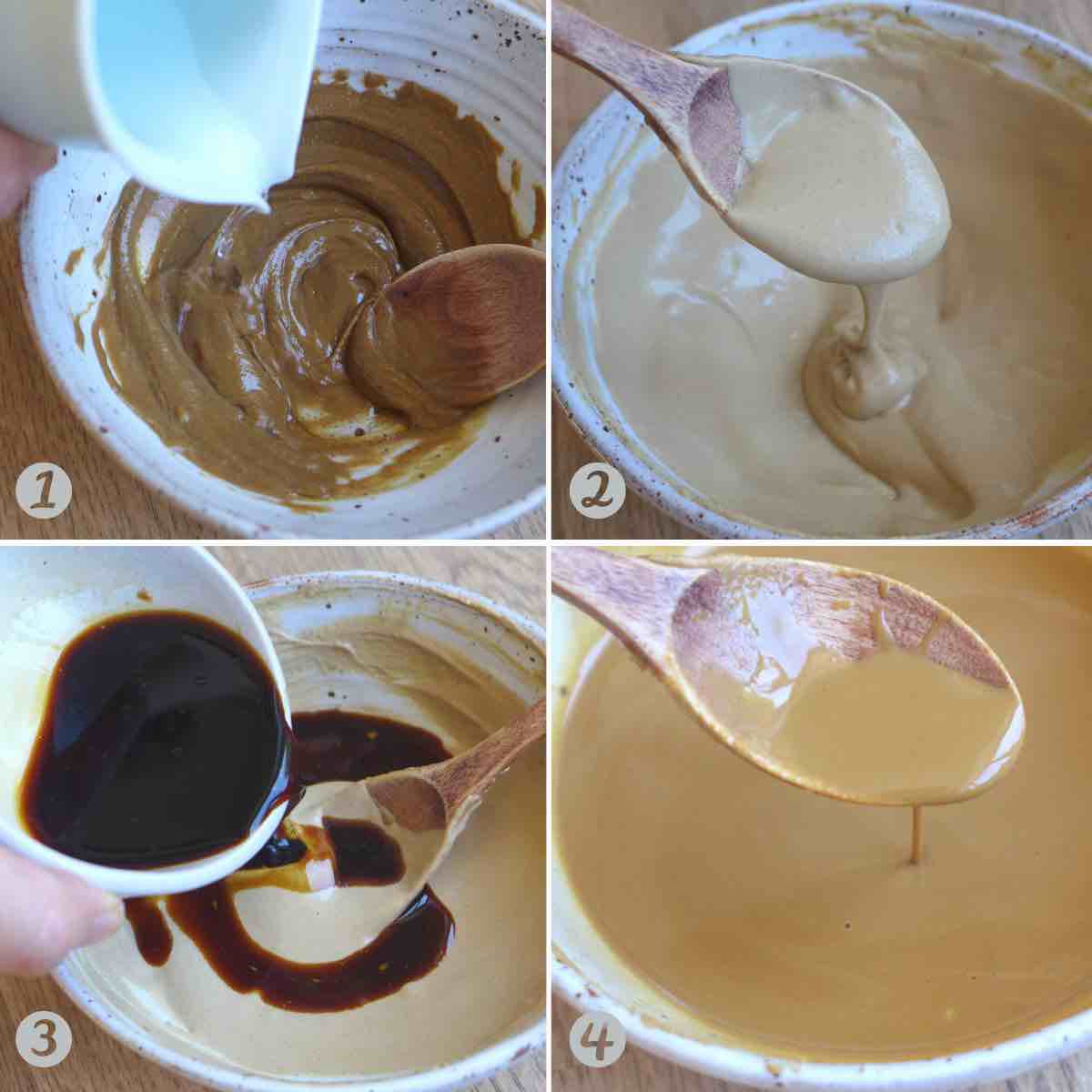
Next, thin the sesame paste with some water. This step may seem simple, but it can easily go wrong. Add the water in several batches. Initially, the paste will appear thicker than its original texture. With more water added and constant stirring, it will eventually reach a silky smooth, semi-runny consistency similar to that of yogurt. Then, add light soy sauce, black rice vinegar, and sugar. Mix well to combine.
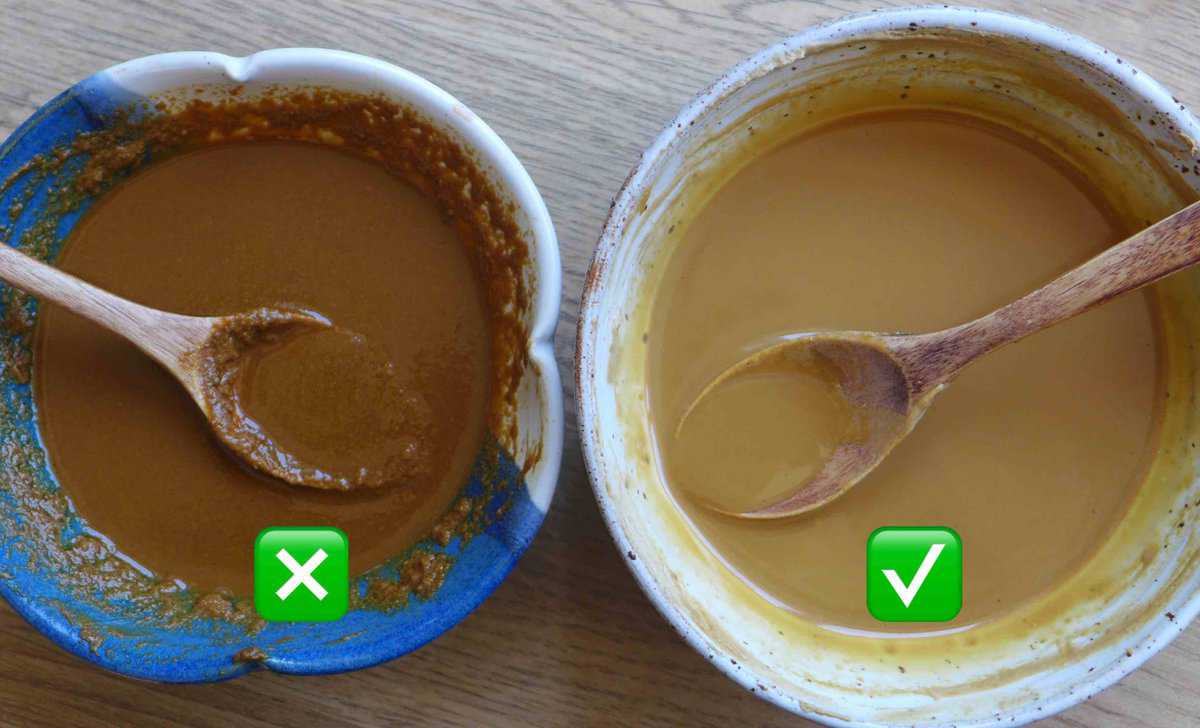
If you don’t follow the above method and instead add all the liquid in a single batch to the sesame paste, you will end up with a lumpy mixture (as seen in the bowl on the left in the image above).
🛎 Note: If you use a substitute like peanut butter or tahini + sesame oil, you’d need less water to thin the sauce as their texture isn’t as thick as that of Chinese sesame paste.
Step 2: Cook the noodles
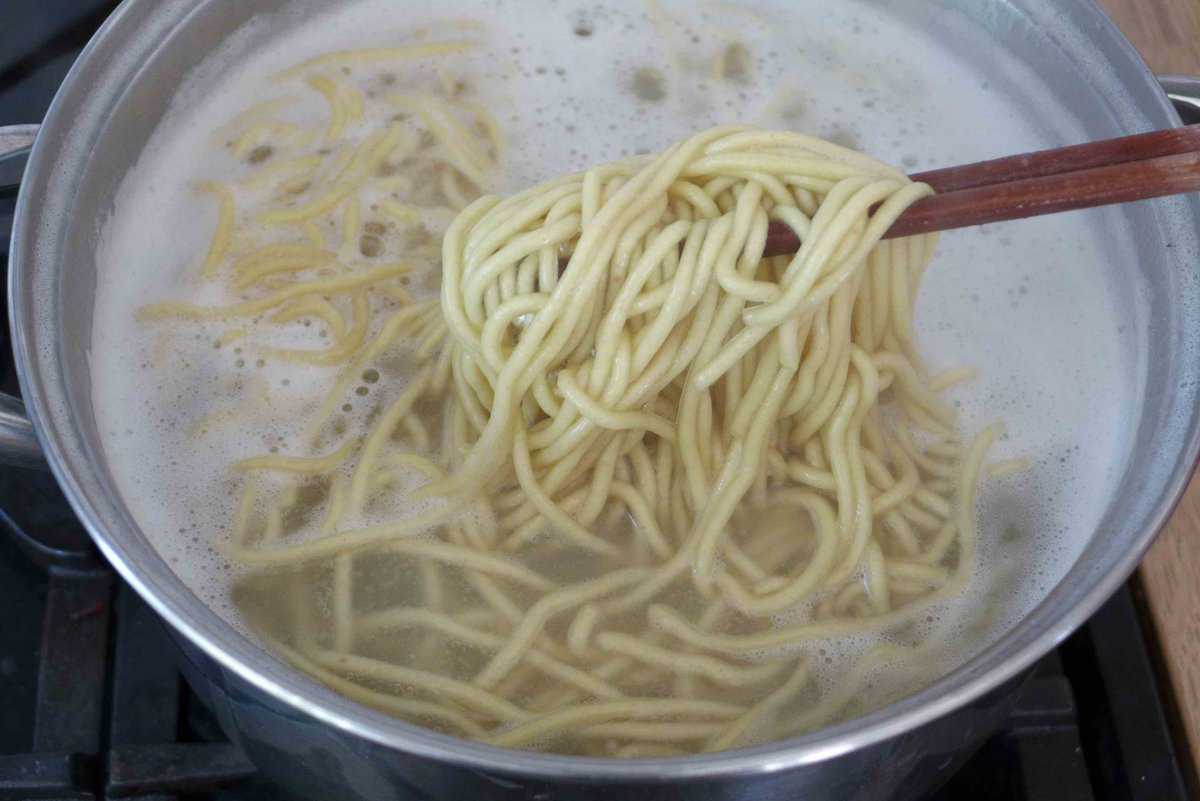
Bring a large pot of water to a full boil. Add the noodles. Depending on the types of noodles you use, the cooking time varies. The general rule is that fresh noodles take less time to cook than dried ones. The best way to judge is to taste a strand.
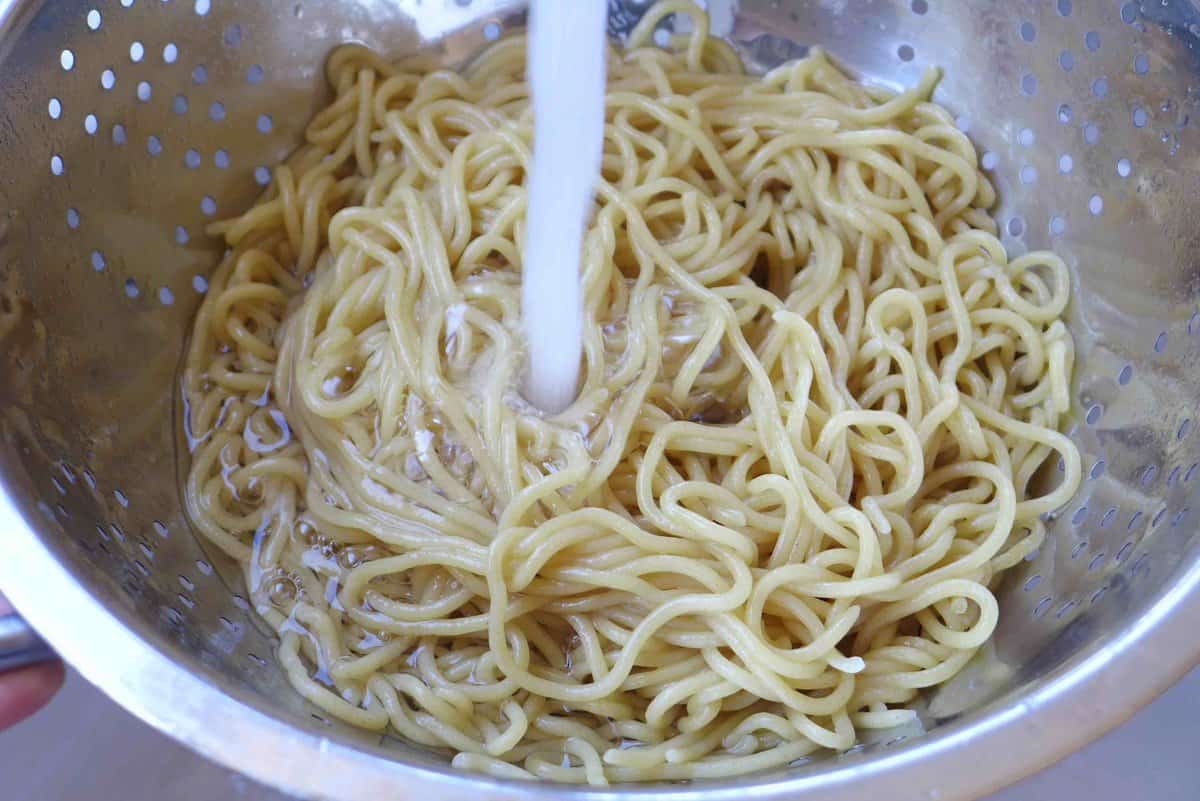
Once they’re cooked, transfer them to a colander and immediately rinse them under running water (assuming your tap water is safe to drink). Once cooled, drain them well.
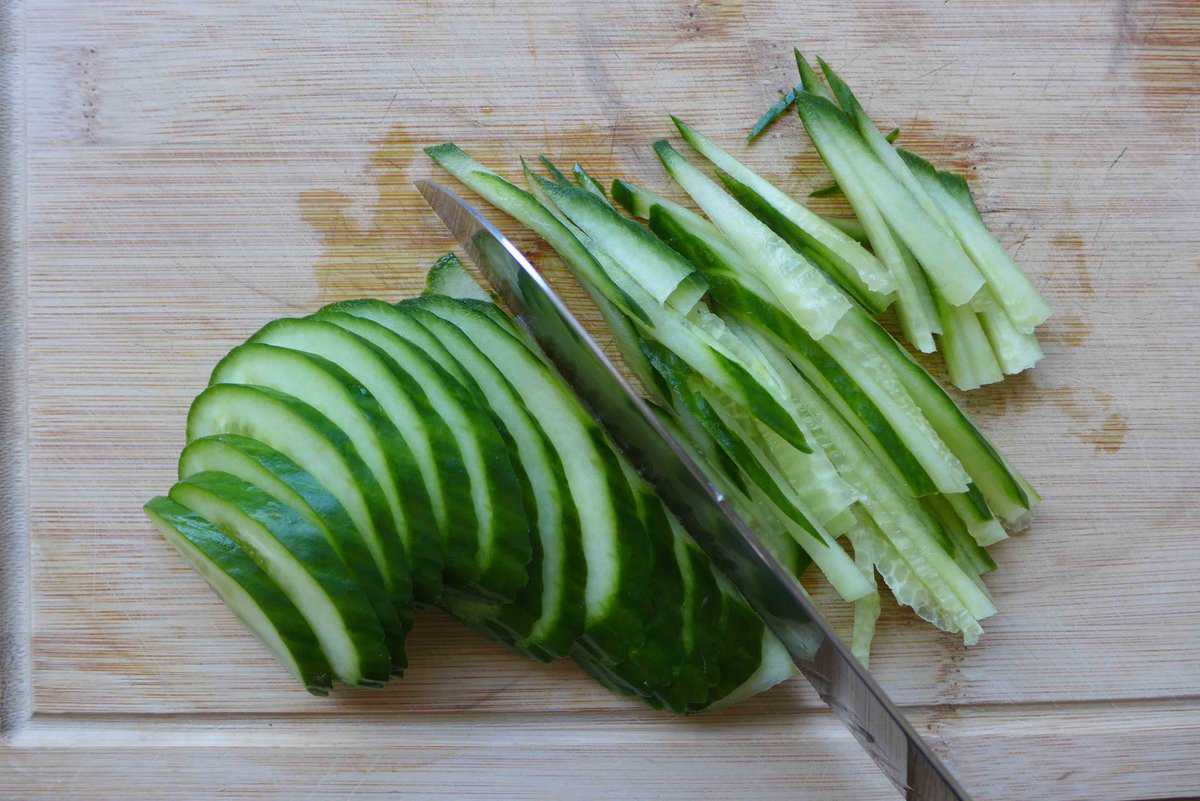
While waiting for the noodles to cook, cut the cucumber into matchsticks and chop fresh chili pepper into strips or rings.
Step 3: Assemble the dish
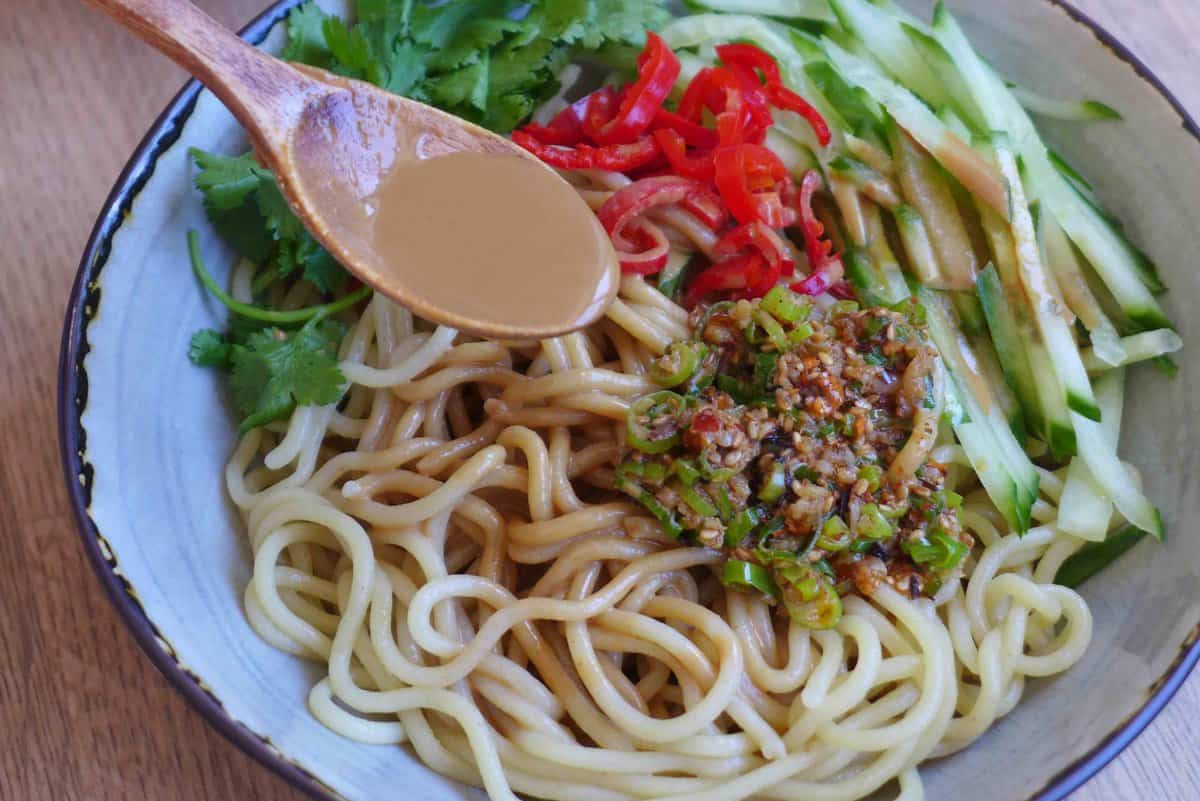
Divide the cooked noodles into serving bowls. Add cucumber, fresh chili, and cilantro if using. Pour the aromatic and spice dressing and the sesame sauce over. Toss very well to coat each strand of noodle with the seasoning. Garnish with toasted sesame seeds to finish.
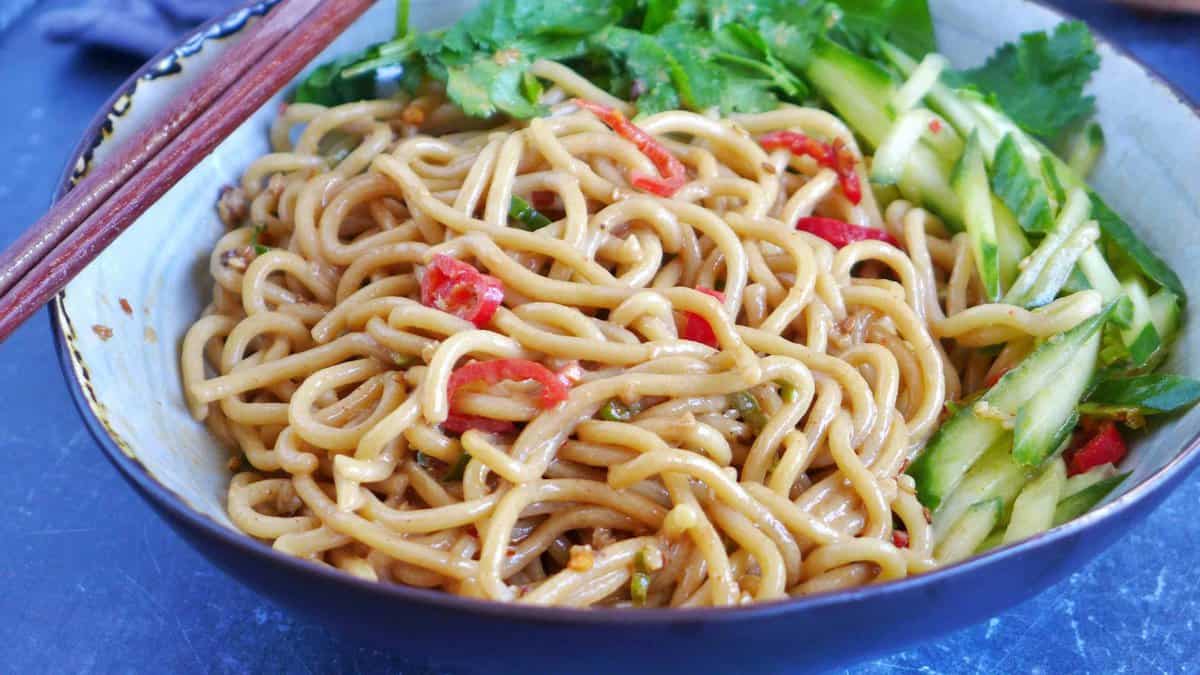
How to serve
More often than not, I have sesame noodles as a quick lunch, topped with a fried or boiled egg. When I fancy savory breakfasts, they come in handy too (work as well as the effortless Scallion Oil Noodles or Soy Sauce Pan Fried Noodles).
Also, I serve it as a side dish, when I cook for a gathering, to accompany crowd-pleasing dishes like Char Siu Pork, Peking Duck, etc. Since it can be prepared in advance and served cold, it saves me from so much stress on the day.
Recipe FAQs
A: They’re available in Chinese stores and some general Asian shops. You can find it in the jarred sauce sections, usually beside bean sauces, chili sauces, etc.
A: Yes, you can. You can store the aromatic and spice dressing in the fridge for up to 3 days. The sesame paste sauce (diluted with soy sauce, vinegar, and water) can be kept in the fridge for a week.
A: Absolutely. Just like Hot Dry Noodles, the sesame-based sauce is great for seasoning hot noodles too.
A: Use fresh or dried rice noodles which don’t contain wheat. Replace regular soy sauce with gluten-free soy sauce or tamari. And use white rice vinegar as a substitute for black rice vinegar which contains wheat.
Other simple dishes
Looking for other quick & easy recipes to try? Here are some popular ones:
📋 Recipe
Love this recipe? Please leave a 5-star 🌟🌟🌟🌟🌟 rating in the recipe card below & if you REALLY like it, consider leaving a comment as well!
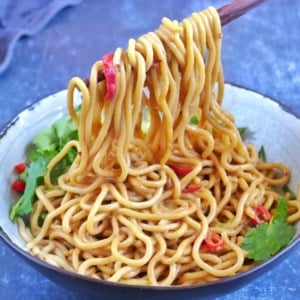
Chinese Sesame Noodles (麻酱面)
Ingredients
For the sauce
- 2 cloves garlic - minced
- 1 stalk scallions - finely chopped
- 1 teaspoon toasted sesame seeds - plus some for garnishing
- 1 teaspoon chili flakes - or to taste
- 2 tablespoon neutral cooking oil
- 2 tablespoon Chinese sesame paste - see note 1 for substitutes
- 2 tablespoon light soy sauce
- 1 tablespoon black rice vinegar
- ¼ teaspoon sugar
Noodles & vegetables
- 2 portion noodles - see note 2 for weight suggestions
- ½ large cucumber - cut into matchsticks
- Fresh chili pepper - chopped, to taste
- Cilantro - optional
Instructions
Prepare the seasonings
- Put minced garlic, chopped scallions, sesame seeds, and chili flakes into a small bowl. Heat oil until hot. Pour it over the above ingredients. Mix well.
- Add sesame paste to another bowl. Stir with a spoon while adding 2 tablespoons of water in several batches until it becomes a smooth, much thinner consistency. Be patient with this process as it’ll take some time to get the right texture (see note 3 if using substitutes). Add light soy sauce, black rice vinegar, and sugar. Mix until fully integrated.
Cook the noodles
- Bring plenty of water to a full boil. Put in noodles. Once it comes back to a boil, turn down the heat a little to avoid boiling over.
- Once cooked, transfer the noodles to a colander and rinse under running water to cool them down quickly.
Assemble the dish
- Place the noodles in 2 serving bowls. Top them up with cucumber, fresh chili, and cilantro (if using). Pour the spicy dressing and the sesame sauce mixture over.
- Give everything a thorough mix to coat each strand of noodle with the sauce. Sprinkle some toasted sesame seeds to garnish.
NOTES
NUTRITION
NUTRITION DISCLOSURE: Nutritional information on this website is provided as a courtesy to readers. It should be considered estimates. Please use your own brand nutritional values or your preferred nutrition calculator to double check against our estimates.


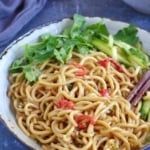

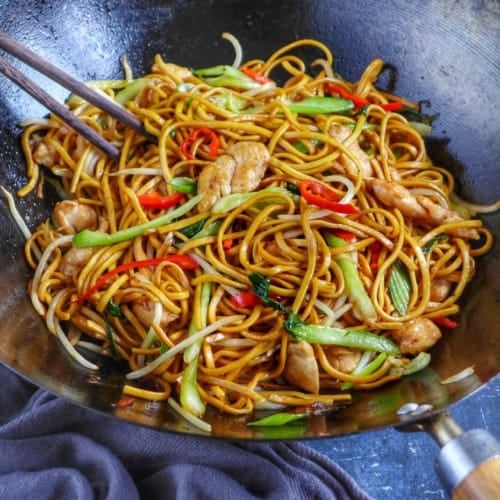
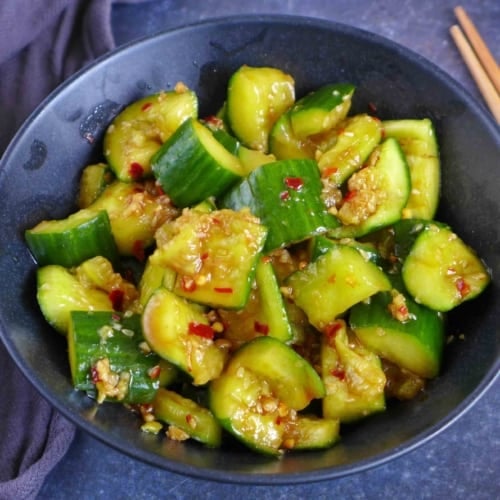
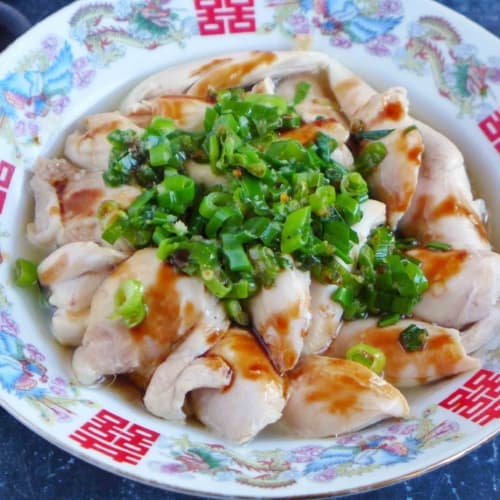
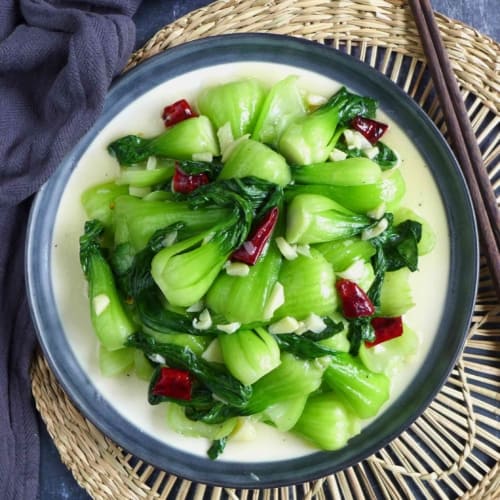
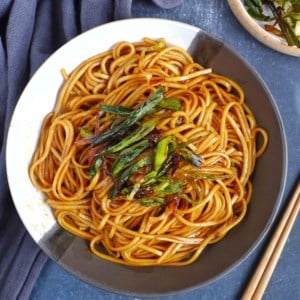
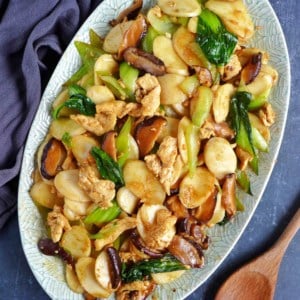
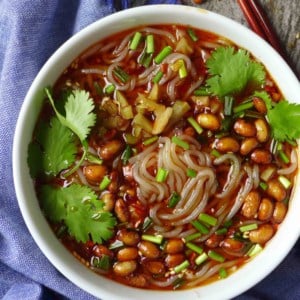
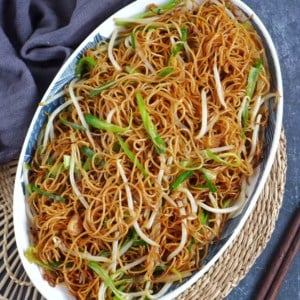
LEAVE A REVIEW